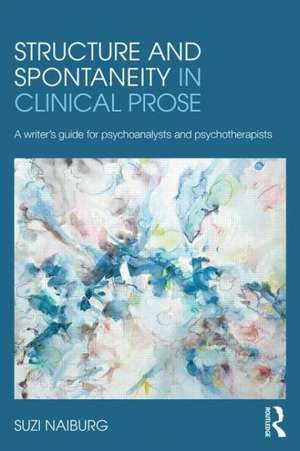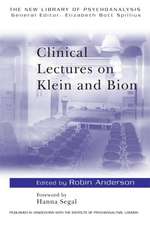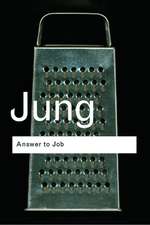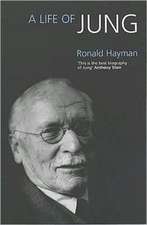Structure and Spontaneity in Clinical Prose: A writer's guide for psychoanalysts and psychotherapists
Autor Suzi Naiburgen Limba Engleză Paperback – 13 apr 2015
Each of the five modes uses different means to construct worlds out of language. The paradigmatic abstracts ideas from experience to build concepts and theories. The narrative mode organizes experience through time, creating meaningful relationships between causes and effects. Lyric narratives present events unfolding in an uncertain present. The evocative mode works by invitation and suggestion, and the enactive mode creates an experience to be lived as well as thought.
Structure and Spontaneity is fundamentally a book about reading and writing in new and different ways. It is an invaluable resource for new and experienced psychoanalysts and psychotherapists and for students, teachers, editors, and writers in the humanities and social sciences.
| Toate formatele și edițiile | Preț | Express |
|---|---|---|
| Paperback (1) | 433.00 lei 6-8 săpt. | |
| Taylor & Francis – 13 apr 2015 | 433.00 lei 6-8 săpt. | |
| Hardback (1) | 1541.94 lei 6-8 săpt. | |
| Taylor & Francis – 20 apr 2015 | 1541.94 lei 6-8 săpt. |
Preț: 433.00 lei
Preț vechi: 455.78 lei
-5% Nou
Puncte Express: 650
Preț estimativ în valută:
82.85€ • 86.51$ • 68.42£
82.85€ • 86.51$ • 68.42£
Carte tipărită la comandă
Livrare economică 15-29 aprilie
Preluare comenzi: 021 569.72.76
Specificații
ISBN-13: 9780415882002
ISBN-10: 0415882001
Pagini: 302
Ilustrații: 7 black & white illustrations
Dimensiuni: 156 x 234 x 18 mm
Greutate: 0.45 kg
Ediția:1
Editura: Taylor & Francis
Colecția Routledge
Locul publicării:Oxford, United Kingdom
ISBN-10: 0415882001
Pagini: 302
Ilustrații: 7 black & white illustrations
Dimensiuni: 156 x 234 x 18 mm
Greutate: 0.45 kg
Ediția:1
Editura: Taylor & Francis
Colecția Routledge
Locul publicării:Oxford, United Kingdom
Public țintă
Postgraduate, Professional, and Professional Practice & DevelopmentCuprins
Preface. Acknowledgements. Writing Workshop. The Poetry of What We Do and the Playground of Clinical Prose. Narrative Meaning and Technique. Short Stories. The Evocative Mode. The Enactive Mode. Lyric Narratives. The Paradigmatic Mode. Narrative Moves and Interweaves. Voice. Introductions. The Narrative Axis. The Conceptual Axis. Shapes of Arguments. Using Sources. Conclusions. Revising. Confidentiality and Disguise. Afterword.
Notă biografică
Suzi Naiburg is a graduate and faculty member of the Massachusetts Institute for Psychoanalysis in private practice in Belmont, MA. She is also a writing coach, teacher, and editor who taught expository writing at Harvard and more than 50 clinical writing workshops.
Recenzii
"A good writer who goes for the jugular, I mean the heart. Suzi Naiburg has a real feel for what writing is and can do, a blessing not all share."
-Michael Eigen, The Birth of Experience
"Structure and Spontaneity in Clinical Prose is a rare find, a real gem that combines wisdom for writers and editors. Its multilayered analytic approach will assist would-be authors to find their voice and helps us all deepen our readings of clinical prose. Dr. Naiburg is a gifted teacher whose wealth of experience in guiding others is conveyed on every page. As an editor, I find her insights invaluable."
-Joe Cambray, past president of the International Association for Analytical Psychology, former US editor of The Journal of Analytical Psychology
"Suzi Naiburg’s book brings clinical writing alive as art and lived experience and offers a stunning understanding of what it takes to create good clinical prose. Her book is a splash of clear cold water on the familiar landscape of arid, artless clinical writing. Dr. Naiburg is a rare reader of clinical works, attentive to the word-by-word decisions writers make. Her skillful exegesis of a range of styles and structures invites readers to attend to nuances of language and appreciate how clinicians relive particular moments with their patients that cannot be summed up but only evoked through the art of that particular writer. Her writing exercises invite spontaneity and considered choices, creativity and constraint, micro decisions and macro structures of organization. This book is a vital resource for anyone interested in clinical writing, or for that matter, anyone interested in truly compelling writing."
-Annie G. Rogers, A Shining Affliction and The Unsayable
"For me there's great pleasure in a book about writing by a writer who is thrilled by good writing... What makes Naiburg's book special is that she is not only a writer and writing teacher, who loves reading and writing, but she's also a psychoanalyst who knows our particular field and literature well. It seems that she's read and absorbed everything. Moreover, she has a deep and detailed understanding of good analytic writing--its structures and stylistic modalities--which she beautifully expresses, illustrates, and makes accessible to her readers. She even provides exercises that promote lively and conscious prose, prose that accrately reflects who we are and what we want to say. Because Naiburg has directed this book particularly to psychoanalysts and psycotherapists--a group responsible for spectacularly arid and turgid literature--she explicates with nuanced understanding how clinicians can relive and vividly capture their experiences in writing. And strewn throughout the book are excellent analytic writing samples as well as follow-up exercises. Thus we can can profitably use what she has to offer in order to inteisfy our appreciation for good writing, organize a strategy and procdure for our own writing projects, and enrich and enliven our prose. Structure and Spontaneity is at least two books in one. The first book seeks to understand and teach the structure of good analytic wrtiing, and the second to identify and use some literary modes that contribute to impactful prose. I have said 'at least two books' because the extraordinary collection of psychoanalytic writing samples--along with Naiburg's illuminating exegese of them--could make a third book by itself."
-Joye Weisel Barth, Ph.D., Psy.D., in the International Journal of Psychoanalytic Self Psychology
"[Inspiring] and practical... Naiburg's book manages to dance evocatively around these far-reaching implications of writing for psychotherapy while being supremely practical, grounded in 84 writing exercises that make concrete what is at stake in language in, and above all about, the consulting room... Naiburg seeks to meld the epistemological or knowledge-producing with the actual spontaneity of the psyche... Structure and Spontaneity in Clinical Prose contributes striking reflections on perennial debates in the philosophy of language... Superbly researched... Above all, Structure and Spontaneity in Clinical Prose is a quest to offer the paradoxical and enabling dialogue between 'structure' and 'spontaneity'... Structure and spontaneity need each other and need to know each other. Just as we writers need this book."
-Susan Rowland, Pacifica Graduate Institute, in the International Journal of Jungian Studies
"The eighty-four writing exercises in [this] book are full of valuable challenges. But Naiburg's graceful prose is never challenging. She inspires and encourages writers, and offers insights for new and experienced writers, editors, and teachers alike... Her readings of resonant clinical examples make us more adept at seeing subtle differences in our modal writing decisions and their effects. These offerings are among the great stregnths of her book... [OFten] exquisite and always insightful"
-Randy Fertel, professor and author, in Jung Journal
A good writer who goes for the jugular, I mean the heart. Suzi Naiburg has a real feel for what writing is and can do, a blessing not all share.
Michael Eigen, The Birth of Experience
Structure and Spontaneity in Clinical Prose is a rare find, a real gem that combines wisdom for writers and editors. Its multilayered analytic approach will assist would-be authors to find their voice and helps us all deepen our readings of clinical prose. Dr. Naiburg is a gifted teacher whose wealth of experience in guiding others is conveyed on every page. As an editor, I find her insights invaluable.
Joe Cambray, past president of the International Association for Analytical Psychology, former US editor of The Journal of Analytical Psychology
Suzi Naiburg’s book brings clinical writing alive as art and lived experience and offers a stunning understanding of what it takes to create good clinical prose. Her book is a splash of clear cold water on the familiar landscape of arid, artless clinical writing. Dr. Naiburg is a rare reader of clinical works, attentive to the word-by-word decisions writers make. Her skillful exegesis of a range of styles and structures invites readers to attend to nuances of language and appreciate how clinicians relive particular moments with their patients that cannot be summed up but only evoked through the art of that particular writer. Her writing exercises invite spontaneity and considered choices, creativity and constraint, micro decisions and macro structures of organization. This book is a vital resource for anyone interested in clinical writing, or for that matter, anyone interested in truly compelling writing.
Annie G. Rogers, A Shining Affliction and The Unsayable
-Michael Eigen, The Birth of Experience
"Structure and Spontaneity in Clinical Prose is a rare find, a real gem that combines wisdom for writers and editors. Its multilayered analytic approach will assist would-be authors to find their voice and helps us all deepen our readings of clinical prose. Dr. Naiburg is a gifted teacher whose wealth of experience in guiding others is conveyed on every page. As an editor, I find her insights invaluable."
-Joe Cambray, past president of the International Association for Analytical Psychology, former US editor of The Journal of Analytical Psychology
"Suzi Naiburg’s book brings clinical writing alive as art and lived experience and offers a stunning understanding of what it takes to create good clinical prose. Her book is a splash of clear cold water on the familiar landscape of arid, artless clinical writing. Dr. Naiburg is a rare reader of clinical works, attentive to the word-by-word decisions writers make. Her skillful exegesis of a range of styles and structures invites readers to attend to nuances of language and appreciate how clinicians relive particular moments with their patients that cannot be summed up but only evoked through the art of that particular writer. Her writing exercises invite spontaneity and considered choices, creativity and constraint, micro decisions and macro structures of organization. This book is a vital resource for anyone interested in clinical writing, or for that matter, anyone interested in truly compelling writing."
-Annie G. Rogers, A Shining Affliction and The Unsayable
"For me there's great pleasure in a book about writing by a writer who is thrilled by good writing... What makes Naiburg's book special is that she is not only a writer and writing teacher, who loves reading and writing, but she's also a psychoanalyst who knows our particular field and literature well. It seems that she's read and absorbed everything. Moreover, she has a deep and detailed understanding of good analytic writing--its structures and stylistic modalities--which she beautifully expresses, illustrates, and makes accessible to her readers. She even provides exercises that promote lively and conscious prose, prose that accrately reflects who we are and what we want to say. Because Naiburg has directed this book particularly to psychoanalysts and psycotherapists--a group responsible for spectacularly arid and turgid literature--she explicates with nuanced understanding how clinicians can relive and vividly capture their experiences in writing. And strewn throughout the book are excellent analytic writing samples as well as follow-up exercises. Thus we can can profitably use what she has to offer in order to inteisfy our appreciation for good writing, organize a strategy and procdure for our own writing projects, and enrich and enliven our prose. Structure and Spontaneity is at least two books in one. The first book seeks to understand and teach the structure of good analytic wrtiing, and the second to identify and use some literary modes that contribute to impactful prose. I have said 'at least two books' because the extraordinary collection of psychoanalytic writing samples--along with Naiburg's illuminating exegese of them--could make a third book by itself."
-Joye Weisel Barth, Ph.D., Psy.D., in the International Journal of Psychoanalytic Self Psychology
"[Inspiring] and practical... Naiburg's book manages to dance evocatively around these far-reaching implications of writing for psychotherapy while being supremely practical, grounded in 84 writing exercises that make concrete what is at stake in language in, and above all about, the consulting room... Naiburg seeks to meld the epistemological or knowledge-producing with the actual spontaneity of the psyche... Structure and Spontaneity in Clinical Prose contributes striking reflections on perennial debates in the philosophy of language... Superbly researched... Above all, Structure and Spontaneity in Clinical Prose is a quest to offer the paradoxical and enabling dialogue between 'structure' and 'spontaneity'... Structure and spontaneity need each other and need to know each other. Just as we writers need this book."
-Susan Rowland, Pacifica Graduate Institute, in the International Journal of Jungian Studies
"The eighty-four writing exercises in [this] book are full of valuable challenges. But Naiburg's graceful prose is never challenging. She inspires and encourages writers, and offers insights for new and experienced writers, editors, and teachers alike... Her readings of resonant clinical examples make us more adept at seeing subtle differences in our modal writing decisions and their effects. These offerings are among the great stregnths of her book... [OFten] exquisite and always insightful"
-Randy Fertel, professor and author, in Jung Journal
A good writer who goes for the jugular, I mean the heart. Suzi Naiburg has a real feel for what writing is and can do, a blessing not all share.
Michael Eigen, The Birth of Experience
Structure and Spontaneity in Clinical Prose is a rare find, a real gem that combines wisdom for writers and editors. Its multilayered analytic approach will assist would-be authors to find their voice and helps us all deepen our readings of clinical prose. Dr. Naiburg is a gifted teacher whose wealth of experience in guiding others is conveyed on every page. As an editor, I find her insights invaluable.
Joe Cambray, past president of the International Association for Analytical Psychology, former US editor of The Journal of Analytical Psychology
Suzi Naiburg’s book brings clinical writing alive as art and lived experience and offers a stunning understanding of what it takes to create good clinical prose. Her book is a splash of clear cold water on the familiar landscape of arid, artless clinical writing. Dr. Naiburg is a rare reader of clinical works, attentive to the word-by-word decisions writers make. Her skillful exegesis of a range of styles and structures invites readers to attend to nuances of language and appreciate how clinicians relive particular moments with their patients that cannot be summed up but only evoked through the art of that particular writer. Her writing exercises invite spontaneity and considered choices, creativity and constraint, micro decisions and macro structures of organization. This book is a vital resource for anyone interested in clinical writing, or for that matter, anyone interested in truly compelling writing.
Annie G. Rogers, A Shining Affliction and The Unsayable
Descriere
This book will teach you how to read gifted writers for inspiration and practical lessons in the craft of writing and apply these to your own work.











